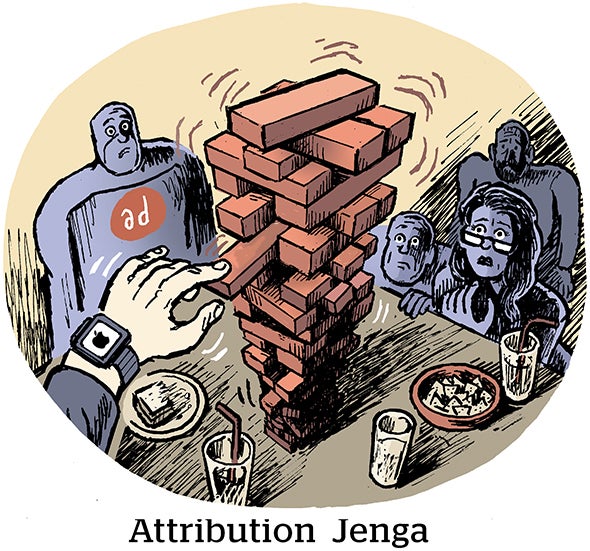We business-to-business marketing professionals think about our target audience practically every minute (it’s kind of an obsession). We know their revenue, their number of employees, the titles they hold, their budgets, their hobbies, and most important, their decision roles. This is static lead information, and we try to know as much as we can.
But what about dynamic information, which changes over time? For instance, when are people ready to buy?
That’s where decision stages come in. A decision stage is a unique point in time during the b-to-b lead cycle. It’s another way to segment leads, because their needs differ so dramatically from stage to stage. This affects how we find them, how we evaluate them, and how we craft our message for them.
Here are five b-to-b buyer decision stages, and how to apply a unique message to each:
1) problem solving. This is the first stage, where a b-to-b buyer realizes a need for a new solution. We marketers hardly ever hear about prospects in this stage, unless we have consulting partners who cover our industry or have massive ad budgets that make it impossible for buyers to miss us. A push strategy is not how you should go about communicating with people in this stage. Instead, adopt a consultative approach focused on detailed technological discussions with content experts. This stage is the biggest reason we need social media, partnerships, blogs, forums, associations, and networks.
When somebody signs up for an e-mail campaign from a site designed to reach people in this initial stage, your approach should be consultative and focused on adding value through expert knowledge.
2) solution seeking. In this stage, the person has an idea of what he needs and is searching for a company to provide it. At this point the solutions can vary widely. If a prospect finds you at this stage, your material should be crisp and oriented toward the value of your solution. Your company’s experience and capabilities play a large role in this stage. And that should be amplified through your expert webinars, white papers, and thought leadership. It’s clear why your Web presence in the previous stage can build credibility for this one.
When somebody signs up for e-mail in this stage, you should gather as much information as you can, so that you can begin to develop a solution to match their needs.
3) criteria development. At this point your prospects have found companies that seem to offer a relevant solution and are developing decision criteria. If this is your first contact with prospects, they are likely interested in your spec sheets, because they’ve compiled checklists and will decide whether to include your company on their shortlist based on how well you match up. Your benefit statements are nice, but ultimately the question is “Do you deliver or not?”
When prospects are in this stage, you may already be in discussion with them about your solution, having begun communicating with them in an earlier stage. If they are brand new to you, you need to make your information as quick and easy to understand as possible, because the prospect is racing to understand a lot of it.
A note from Captain Obvious: The later in the lead cycle that prospects find you, the worse off you are. By stage three, they’ve already determined the problem, how to solve it, and which companies probably can deliver a capable solution. Afterward they are rounding out the field to justify the decision they likely have in mind. Even so, too many companies focus their marketing efforts on the last two stages:
4) application testing. If this is when prospects find you, during a final sweep for companies that meet their criteria, this is also when they’ll register for free trials, watch videos, grab brochures at trade shows, click on your paid search ad, and sign up to win the iPod you’re giving away. Your cost per lead might be lower at this stage, but there’s a reason; the close rate will be drastically lower given that this person has not heard of you during the first three stages.
Your message here is the one that b-to-b marketers tend to write most often: value-driven, quick, to the point. Grab attention and be concise. This is where great copywriting and creative make a difference.
5) final purchase. This is the default value for how marketers and sales execs treat most prospects. We assume they are ready to buy, so we speak to them that way. We tell them how much money they will save or how much faster their systems will be, because we know we’re trying to influence a decision that is already made. This is where the big money is spent on publications, online banners, and e-mail lists, and this is where the traditional marketing metrics are well known: impressions, opens, clicks, views, conversions. And we all know how low these rates tend to be.
This stage is all about branding, not technical detail. Boil your message down to a simple vision and build brand awareness.
I admit that these categories are simplistic. They are meant to easily identify what message, what material, and what method we should use for each stage. What’s more, I understand that not everybody has the same business needs. But in general, the earlier a prospect learns about you, the better. If your company is out there with consultative discussions, technical materials, benefit statements, crisp differentiation, and thought leadership, you will be in the catbird seat, and someone else will be the afterthought.
It may be irritating when you get a prospect who is a year from making a decision, but it’s powerful information to have. And it beats learning about that prospect a year later, when it’s too late.
Tom Bishop is marketing manager at e-mail marketing solutions provider Net Atlantic.



